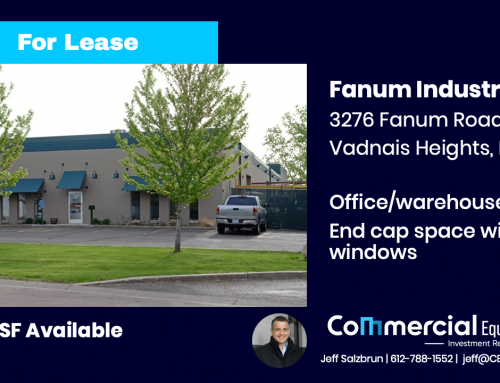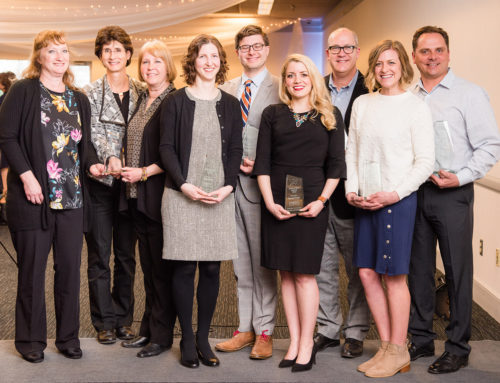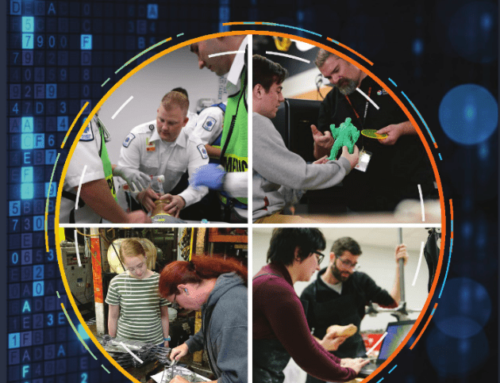In 1975 Vadnais Heights looked like a country village, although the Village of Vadnais Heights officially became a city that year by an act of the State Legislature. Thirty years later, the differences between the Vadnais Heights of 1975 – ’76 and the city of 2005 were enormous. Development into a full-service city was not a given. Vadnais Heights could have remained a rural enclave like Gem Lake or a bedroom-suburb like White Bear Lake with little in the way of industry. Thanks to visionary leaders, the community’s strong local identity and the beauty and easy freeway access of the land, Vadnais Heights matured into a full-fledged city with the heart of a village.
Strong Leadership
Strong leadership began with Henry “Hank” Tessier Jr. who served as Mayor from 1974 through March of 1981, when poor health forced him to step down. Tessier had been instrumental in getting the Fire Department started in 1971when he was a Councilmember, and in the ‘80s he would be the impetus for forming the Vadnais Heights Lions Club and the Vadnais Heights Economic Development Corporation (VHEDC). He also hired young Gerry Urban in 1974 to train under and eventually replace John Paulson, the 17-year part-time City Clerk-Treasurer. Urban was appointed acting City Clerk in 1976 and official Clerk-Treasurer in 1977 when Paulson retired. (The City Clerk position evolved into the City Administrator position, and Urban was City Administrator until 2015.)
Together, Tessier and Urban organized the VHEDC in 1984 under the State of Minnesota’s STAR City Program. Vadnais Heights became a STAR City for attracting top quality business firms. Tessier and other leaders of the mid-‘70s could see that Vadnais Heights was the next suburb likely to experience massive growth. Little Canada had been Ramsey County’s fastest growing suburb during the ‘70s; it was Vadnais Heights’ turn in the ‘80s. But, development could only take place if the community had city water installed. And, development could be a curse if it was not firmly directed. Therefore, the main policy tasks of the ‘70s were persuading city residents to adopt city water and creating a comprehensive zoning plan.
City Water System Transformed the City
The first city water system was installed to serve land that had been earmarked for business development along Highway 61 and along Wolters Boulevard (now Willow Lake Boulevard), Labore Road and County Road E. The City Council wanted to build the tax base by attracting new firms with city water. Called the city’s “Industrial Well” system, a new Perkins Restaurant and Dynamic Air Manufacturing were its first customers. Water installation was also proposed for new housing developments.
In 1975 there were about 30 non-farm businesses operating in the city. Local leaders felt that Vadnais Heights needed to add more commercial-industrial development in order to ease the residential tax burden, and they began inviting companies to move to the city. The city added approximately 320 businesses between 1976 – 2005.
Industrial areas clustered around Willow Lake Boulevard and near the intersection of McMenemy Street and Highway 96. The City Center District at I-35E and County Road E was “the downtown” – housing, retail shops, restaurants, hotels and offices. Eventually, a new City Hall and Fire Station would locate there. Other businesses would stretch from Highway 61 to Labore Road.
The ‘80s saw the addition of the city’s largest employers, including HB Fuller, IC System and Reell Precision Manufacturing. The ‘90s welcomed SEH, Du Fresne Manufacturing, Holiday Inn Express, WalMart, Target and Festival Foods (where Fresh Thyme Farmers Market now operates).
City Center Then and Now
Today’s City Center – downtown Vadnais Heights – is a very different landscape from 100 years ago, when large tracts of land – both south and north of today’s County Road E – were expansive farms mostly owned by the Swedes and Italians who followed the founding French Canadian families of Vadnais, Garceau and Bibeau to the Lake Vadnais area.
The Walmart site was once known as “Andersonville.” Emil and Minnie Anderson had moved their family and their St. Paul coal business office to their first 20 acres in the 1890s. They hauled melons to St. Paul and cabbage to Chaska for sauerkraut production. Their children grew up, had families and stayed on the farm; eventually, a row of nine houses stretched along the southside of County Road E.
On the northside of the road – present-day Vadnais Square – Pasquale Valento and his extended family farmed over 100 acres, purchased with gold and silver he saved from his railroad job in St. Paul. Pasquale and Louise had 15 children and grew crops of asparagus, onions, beans, squash and berries. Another Valento grew strawberries where City Hall is today. Vadnais Square is presently anchored by Target and Fresh Thyme Farmers Market and is home to a strong mix of retail and dining establishments.
Southeast and Northeast Quadrants, off I-35E: Frank and Agnes Bibeau founded their 30-acre farm in the early 1900s; they were one of the last Vadnais Heights’ farming families to sell land in the early 1980s for the development of the southeast quadrant, which began with Vadnais Plaza. The northeast quadrant, however, was first to realize commercial development in 1975 with Perkins Restaurant and a gas station. Today, Fairfield Inn, The Urgency Room and Allina Health Clinic dominate that quadrant. Ten years after initial development in the northeast quadrant, Vadnais Plaza was built across the street; Ruberto’s Restaurant, a fine dining establishment, was the anchor. Within 15 years, the city’s first hotel – Holiday Inn Express – was built, and Jimmy’s Food & Drink and Event Center replaced Ruberto’s.
In a recent interview, VHEDC Founder Hank Tessier said, “The VHEDC was conceived to be a ‘nimble operation.’ We didn’t want it to be tied to the city government; we wanted VHEDC to make its own deals quickly without politics. Our initial goal was to develop a strong tax base for our two school districts. Nearly 20 years later, most of our goals were realized, and today, there are more than 300 businesses in Vadnais Heights.”
From “Reflections from the Lake: A 160-Year History of the Vadnais Heights Community” written by Rose-Ellen Soler.







Leave A Comment